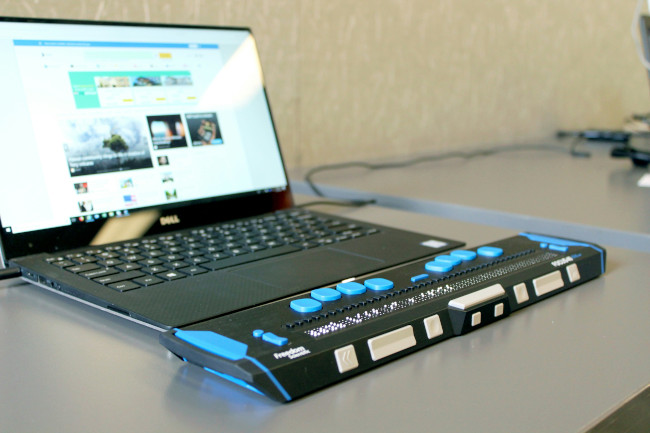19 July 2024
How has technology improved accessibility over the last 25 years?
At A2i we’re celebrating our 25th birthday so we’re looking back at how accessibility and technology have changed over the last 25 years. From mobile phones to AAC devices, we want to talk about how modern technology has improved accessibility for disabled people.
In 1999, as the millennium approached, there was a sense of society becoming ever more reliant on technology, with the release of ‘the Matrix’ and the hysteria around the millennium bug. However, technology has proven to be vital to the inclusion of disabled people, especially to those who cannot read printed text.
Much more than just a mobile phone
The widespread use of mobile phones in the late 90s allowed sight impaired people access to information that was previously only available on display screens or as hard copy printed information, which was impossible to read. Today, smartphones enable access to:
- public transport times
- GPS navigation/route planning
- scanning and reading documents with synthetic speech (which replaced slow, bulky machines)
- Shopping ( did you know, the first online grocery delivery service was launched by Tesco in 1999!)
- Online banking
Partially sighted people can now use their smartphone’s camera to zoom in on fine print or view almost anything from a distance, such as a display board in an airport, which constantly updates, or a live sports event on a TV screen.
Deafblind people have also benefitted from using the phone’s screen alongside a refreshable Braille display, enabling them to communicate between themselves and hearing and sighted people, who may not be fluent in deafblind manual sign language.
Accessible devices
Countless mainstream devices are now available with accessibility features built in. Smart TV’s, vibrating watches, washing machines and of course mobile phones. Over the last 25 years, Augmentative and Alternative communication devices, also known as AAC devices, have given greater independence to people with mobility and learning disabilities. Such devices include mouth sticks, sip and puff devices, and voice assistants like Siri and Cortana.
Even apps, such as Live Transcribe, downloadable by Android users, allows people who are deaf or hard of hearing to talk to people who use verbal communication. The app simply listens to spoken words and translates them into words that appear as captions on your mobile screen.
A device called the My Tobii D10 was the first desktop eye-gaze device which was released in the early noughties. Users could interact with their screen and even type by directing their gaze to their computer and moving their sight across the screen. A small device, about the length of a ruler would track their eye movements. In this video, Steve talks about how using AAC devices has improved his quality of life.
What has changed at A2i since 1999?
At A2i the demand for certain formats has changed hugely since 1999.
While Braille, large print and audio remain widely used, we stopped putting audio onto cassette tapes in 2018. Most of our audio is sent electronically to customers as MP3 files. CDs are still common, but USB memory sticks are a more portable option that can be played on a wider range of devices.
Demand for Moon has reduced, however, in the last few years, British Sign Language videos, along with subtitles and captioning, have become ever more popular because of greater awareness of the Deaf community and the reduction in the cost of producing videos.
Back in 1999, Easy Read didn’t exist in the UK but now it is now the most complex and fast-growing format we produce at A2i. Read our blog about what Easy Read is and how it can benefit people with learning disabilities.
Think back to what you might have been doing on this day in 1999. Maybe you were watching a VHS Video or calling your friend from a phone box!
A2i were transcribing top quality documents back in 1999 and 25 years on we’re still providing the same excellent service. Please get in touch with our friendly team if you need a document transcribed into an accessible format.
You can also watch our new video on YouTube – which also didn’t exist back in 1999!
You can send us an email: info@a2i.co.uk
fill out our online form
or call our telephone: 01179 44 00 44
In case you’ve missed us you can find our social media here:
Twitter: @A2iTranscribes
LinkedIn: a2i-transcription-services
Instagram: a2itranscription
YouTube: @a2itranscription




